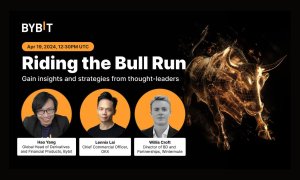Barclays FX position flounders; Bank’s massive leap in earnings does not relate to trading
Barclays position as a Tier 1 FX liquidity provider has dropped to a lowly 9th position globally, and for the first time a non-bank market maker has risen to dominance. Does today’s announcement of second quarter growth really relate to growth, or lack of regulatory fines? Here is our analysis.

Barclays has long been one of the world’s largest Tier 1 interbank FX dealers, its global financial markets key-component, the BARX single-dealer platform having garnered a love-hate relationship among liquidity takers, largely due to the company’s overtly pro-last look stance which has been doggedly adhered to for several years.
Five years ago, in 2013, Barclays was most certainly an all-encompassing dominator of the Tier 1 electronic trading world. with 10.4% of all worldwide FX order flow being processed through the bank’s Canary Wharf operations.
Today’s reluctance by Tier 1 banks to extend counterparty credit to the non-bank OTC derivatives sector has resulted in XTX Markets now being in an astonishing second position globally for handling FX order flow at top level, between JPMorgan and UBS, a position usually reserved for banks, and the first time in history that a non-bank market maker has dominated the global FX dealing sector.
In 2018, Barclays’ market share is down to 4.19%, placing Barclays in 9th position globally, yet today’s announcement of second quarter earnings heralds enormous increases in overall revenues compared to the same period last year.
Pre-tax profits at Barclays for the first six months of this year fell from £2.3 billion to £1.6 billion after the bank paid out about £2 billion, including a £1.4 billion settlement with the US Justice Department.
Without the charges, Barclays experienced a pre-tax profits jump of 20% to £3.7 billion, with the UK arm seeing a 30% rise to £826 million, and total income for the period was flat at £10.9 billion.
Barclays Group CEO Jes Staley has today stated “For some time with no significant litigation or conduct charges, restructuring costs, or other exceptional expenses which hit our profitability”.
That means it is “the first clear sight of the statutory performance of the business which we have re-engineered over the past two and a half years – Barclays’ transatlantic consumer and wholesale bank – and it is a positive sight”.
Thus, it can be deduced that the increase in revenues and profitability is perhaps due to lack of litigation and censuring from regulators compared to the previous reporting period, rather than an increase in investment banking and electronic markets activity.
Barclays Bank has been, for a remarkable 326 years, a pinnacle among London’s banking and international financial powerhouses.
326 years is an incomprehensible amount of time, marking out the vast institution with a revenue of £25.4 billion per year as being one of the most established financial entities in the world.
This year, however, Barclays has begun making a tremendous shift of focus, very rapidly indeed, away from traditional banking, and is making a further concentration on its institutional trading and interbank dealing business that is based in Canary Wharf, in London.
FinanceFeeds has conducted research into the direction of the retail arms of the large Tier 1 British banks over the course of 2016, deducing that most of them are becoming increasingly less interested in retail ‘branch banking’ business and are dedicating much more of their resources toward interbank trading.
Today, Barclays’ initiative in this direction expands further as the bank prepares to close the accounts of 7,000 low-return customers, or move them to another bank in what is being hawked under a politically correct description, that being that it is attempting to reshape its offering to keep pace with tighter capital rules.
More likely, Barclays sees traditional banking as an expensive, resource-hungry exercise and is looking to remove as much of it as possible from the high streets of Britain and Europe.
This is a direction that Barclays has been taking for quite some time. FinanceFeeds was made aware this year by several senior executives of established small to medium enterprises in Britain whose business accounts had been run to perfection, simply finding that Barclays has terminated their accounts.
Barclays is the world’s third largest Tier 1 FX dealer by volume, with 8.11% of the world’s order flow going through its books.
Barclays is also one of Europe’s largest retail traditional banking institutions, with a network across the entire continent from its base in London.
…or rather it was one of Europe’s largest traditional banking institutions.
It is clear that economies of scale are vital for large financial institutions, however Barclays is conducting its dominance by focusing on FX and other interbank derivatives asset classes rather than its traditional business, as just two weeks ago the British company completed its complete exit from the European market’s traditional banking sector, culminating in the sale of the final remaining 74 branches in France to private equity firm AnaCap Financial Partners, meaning that it now can concentrate its efforts solely on being at the very forefront of London’s global electronic trading epicenter.
Structural changes to the markets, management upheaval among many big banks, new non-bank entrants and lack of volumes and volatility have seemingly levelled the playing field among the industry’s biggest firms.
The biggest change in the rankings this year is the decline of the combined market share of the top five global banks. Their market share peaked in 2009 at 61.5% and was still above 60% as recently as 2014.
By 2015, the top five banks accounted for just 44.7% of total volume, however Barclays has now dropped out of the battle for supremacy, languishing way below its peers, all of which also conduct their entire business from London.
So, we have now seen the end of Barclays’ operation of branch banking across European high streets over a year ago, a direction that concluded the Bank’s offloading of its entire Barclaycard credit card operations in Spain and Portugal to Bancopopular-e, a total divestment of its stake in Barclays Africa, a complete dispensement of its Egyptian operations and the sale of its wealth and investment management business in Singapore and Hong Kong.
Meanwhile, on home territory, Barclays continues to stand out in terms of procedure and its direction of market practice with regard to electronic trading with its BARX single-dealer platform.
Barclays is one of the world’s most prominent proponents of the last look execution procedure, its BARX platform which provides FX liquidity by streaming indicative prices on an in house and third party platform basis.
Barclays’ corporate standpoint on the reasons why it uses last look methodology is that being one of the world’s largest interbank FX dealers, it does not generally seek to reject trade requests. However, electronic spot FX market-making is a highly competitive industry and for the reasons set out above it necessarily exposes the liquidity provider to the risk of trading on incorrect pricing.
Barclays maintains that last look functionality is used to protect against these risks and allows liquidity providers to show considerably tighter electronically streamed prices than they otherwise could – something that the bank considers beneficial to every user of electronic FX trading platforms and is very hard line with regard to this.
FinanceFeeds has spoken at length with a number of senior executives within the institutional and prime brokerage sector recently, many of which have openly stated that many banks and institutional participants do not like firms that offer ‘no last look’ execution, despite the regulatory and government derision aimed at the practice, yet Barclays continues to focus on this via its BARX platform which is now becoming a mainstay of the bank’s business. Perhaps this is another reason for the rise to such a lofty position by XTX Markets.
Brett Tejpaul, another co-head of global distribution for credit and equities at Barclays stated last year “The onset of capital rules changed the business – more now isn’t necessarily better and we need to be a lot more selective. In the past we all had a rather one dimensional view through the revenue metric.”
The decision has hardly been made overnight. The banking giant has been working towards a more focussed offering which prioritises returns over revenues for around the last two and a half years, and the lender has already dropped 17,000 clients – some of which Mr Tejpaul described as “essentially inactive” despite the bank shelling out to maintain the relationships – from its books.
After offloading these plus a further 7,000 clients, the firm was be left with approximately 8,000 customers on its markets side.
It certainly seems that in Tier 1 bank-speak, less equals more.









